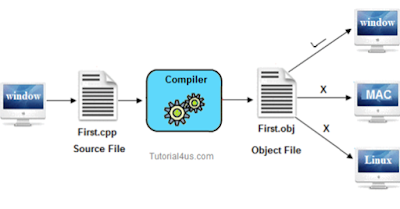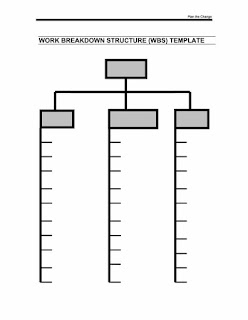About Procedural Programming
Procedural Programming is a term that
computer programmers used to writes a programme. This method is used to develop
software and applications using codes.
C++ is a Programming Language which excellent
in general purpose Programming and it is a powerful system Programming
Language. This is one of the most popular language primarily utilized with
system and application Software, Drivers, Client server applications and
embedded firmware. The main highlight of C++ is a collection of predefined
classes which are data types that can be instantiated multiple times.
Simple- This Language is a simple language because every program can be
written in simple English language so
it is easy to understand and developed by Programmer.
Powerful- C++ is very powerful
programming language, it has wide variety of data types, functions, control
structures, decision making statements also operators for mathematical and
Boolean comparison.
Object oriented Programming Language- This is the main Advantage of this programming
language. It follows concept of oops like polymorphism, inheritance,
encapsulation, abstraction.
Case sensitive- C++ is a case sensitive
programming language. If any language treats lower case latter separately and
upper case latter separately than they can be called as case sensitive
programming language. Also C, C++, Java and .NET are some examples sensitive
Languages.
Platform
dependent – The
program which can be executed in the same operating system which was developed
and compiled but cannot be run and executed on other operating system is
platform depended language.
Procedural Programming is a term that
computer programmers used to writes a programme. This method is used to develop
software and applications using codes.
C++ is a Programming Language which excellent
in general purpose Programming and it is a powerful system Programming
Language. This is one of the most popular language primarily utilized with
system and application Software, Drivers, Client server applications and
embedded firmware. The main highlight of C++ is a collection of predefined
classes which are data types that can be instantiated multiple times.
Simple- This Language is a simple language because every program can be
written in simple English language so
it is easy to understand and developed by Programmer.
Powerful- C++ is very powerful
programming language, it has wide variety of data types, functions, control
structures, decision making statements also operators for mathematical and
Boolean comparison.
Object oriented Programming Language- This is the main Advantage of this programming
language. It follows concept of oops like polymorphism, inheritance,
encapsulation, abstraction.
Case sensitive- C++ is a case sensitive
programming language. If any language treats lower case latter separately and
upper case latter separately than they can be called as case sensitive
programming language. Also C, C++, Java and .NET are some examples sensitive
Languages.
Platform
dependent – The
program which can be executed in the same operating system which was developed
and compiled but cannot be run and executed on other operating system is
platform depended language.
Portability- Carrying the instruction from one system to
another system is known as portability. In C++ language .cpp file can be
connected into .exe file, but we can only execute this file. When we write and
compile any C++ program on operating system that program easily run on other
window based system. When we can copy .exe file to any other computer which
contain window operating system then it works properly, because the native code
of application of application an operating system is same.
Efficient
use of pointers – Pointers is a variable which hold
the address of another variable, pointer directly direct access to memory
address of any variable due to this performance of application is improve. C++
also is a programming language with the concept pointer are available.
Syntax based Language- C++ is a strongly tight syntax based programming language which
follow rules and regulations very strictly.
C, C++, Java, .net, etc. are some examples for syntax based Programming
language.
Compiler based- This means without
compilation no C++ program can be executed. First we need compiler to compile
our program and then execute.
Variables, Identifiers,
Functions/Procedure, Arrays and Control Structures are the Data types which
available is Programming Language.
Variables- A variable is a value that can change, depending on conditions or on
information passed to the program. (Rouse, 2017)
This is known as the space reserved in a memory to save data temporarily. It
contains name (identifier) to hold data temporally.
In C++ variables are created using range of different data types.
They are ‘char’, ‘int’, ‘float’, ‘string’ and ‘bool’. These different data
types may allocate different amount of memory spaces.
·
Char-These type of data types
contain a single core
e.g.: ‘A’, ‘B’, ‘C’
·
Int- These type of data types
contain whole numbers.
e.g.: ‘0’, ‘-5’, ‘10’
·
Float- These type of data types
contain fractional value. (A numerical quantity that is not a whole number)
e.g.: ‘-2.8’, ‘0.78’, ‘4.56’
·
String- These type of data
types contain a text
e.g.: ‘Student’, ‘Lecturer’, ‘Subject’
·
Bool- Bool is a data type which
is ‘TURE/FALSE’ concept.
e.g.: 0/1
Variable
scope
There are two types of
variable scopes which are Local variable and Global Variable.
o
Local Variable- Local variable
define the inside function of a program. It is available for the function it is
defined.
o
Global Variable- Global
variable can be known as a variable created out of all the functions. This
variable is accessible by all the functions.
v Identifiers- Alphabetical char (A-Z),
numbers (1,2,3,4) and underscore (_) are the only data types which can contain
as Identifiers. When coding in C++ I should start with Alphabetical identifier
or underscore. It not permitted to code a special symbols or white spaces as
identifiers. Also, it cannot use special words as Keywords or reserved words.
The examples for identifiers are given below.
e.g.: xyz, ab5, _25, A_B
v Functions/Procedure-A function is a sub program. It is a sub program with its own
statements. Functions are modulating a program into sub components. It contains
a reusable set of statements that performs in a specific activity. In coding a
function should be call to be executed. The two types of sub programme are
function (which returns a reply) and procedure (which has no return or a
reply).
v Array- Array is a series of elements of the same type placed in contiguous
memory locations that can be individually referenced by adding an index to a
unique identifier.
e.g.: string id [25]
string name
[25]
string address [25]
string phone [25]
v
Control Structures- Sequence,
Selections, Loop/Repetition are the three types of control structures.
§
Sequence- Where are set of statements
executes one after the other orderly can be known as sequence.
§
Selection- It is a statement or a block
statement execute depending on a condition. If/else, switch-case are the coding which are using in programming
as s selection.
e.g.: Say “hi”
if its morning
say “good morning”
else
say “good evening”
The flow chart of this example is given below.
§
Repetition- Where a statement or a block
of statements getting executed repeatedly control by a condition. An infinity
loop, is a repetition where it never reached this topping condition. So it
continues continuously. For loop, while,
do while are the data types using for repetition.
e.g.: Start
x=0
while x<5
print “abc”
x=x+1
Do
End.
A flow chart is s diagram of the sequence of
movements or actions of people or thing involved in a complex system. Also, it
can be known as a graphical or symbolic representation of a process. Each in
the sequence is noted with a diagram shape.





Good Article
ReplyDelete